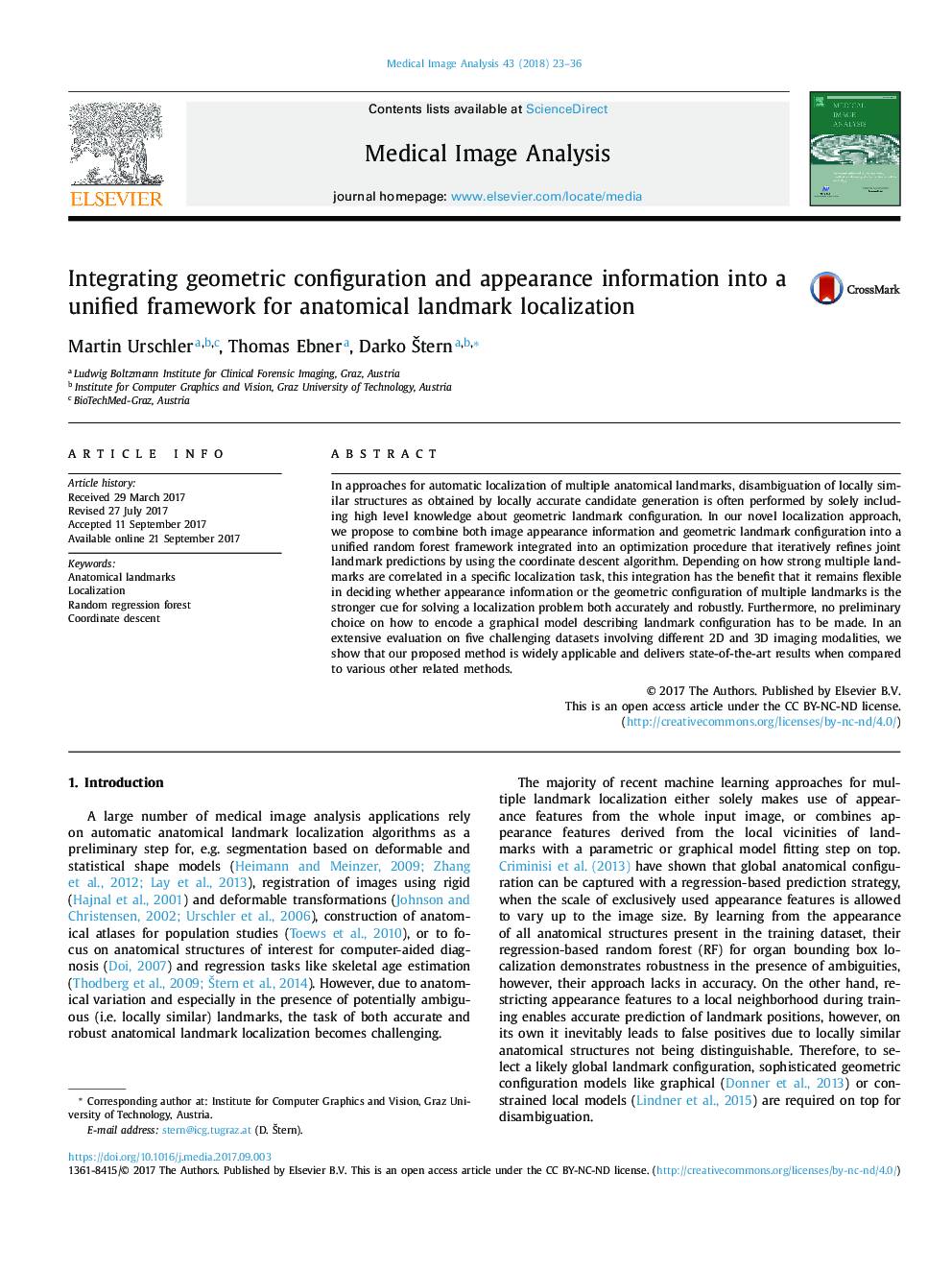| کد مقاله | کد نشریه | سال انتشار | مقاله انگلیسی | نسخه تمام متن |
|---|---|---|---|---|
| 4953319 | 1443004 | 2018 | 14 صفحه PDF | دانلود رایگان |
- Automatic anatomical landmark localization in the presence of locally similar structures.
- Integration of appearance information and geometrical configuration into a random forest.
- Optimization of joint landmark predictions using the coordinate descent strategy.
- Extensive quantitative evaluation on two 2D X-ray and three different 3D data sets.
- Results show state-of-the-art performance and wide applicability.
In approaches for automatic localization of multiple anatomical landmarks, disambiguation of locally similar structures as obtained by locally accurate candidate generation is often performed by solely including high level knowledge about geometric landmark configuration. In our novel localization approach, we propose to combine both image appearance information and geometric landmark configuration into a unified random forest framework integrated into an optimization procedure that iteratively refines joint landmark predictions by using the coordinate descent algorithm. Depending on how strong multiple landmarks are correlated in a specific localization task, this integration has the benefit that it remains flexible in deciding whether appearance information or the geometric configuration of multiple landmarks is the stronger cue for solving a localization problem both accurately and robustly. Furthermore, no preliminary choice on how to encode a graphical model describing landmark configuration has to be made. In an extensive evaluation on five challenging datasets involving different 2D and 3D imaging modalities, we show that our proposed method is widely applicable and delivers state-of-the-art results when compared to various other related methods.
180
Journal: Medical Image Analysis - Volume 43, January 2018, Pages 23-36
